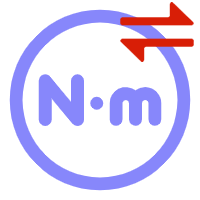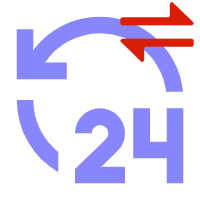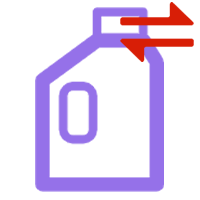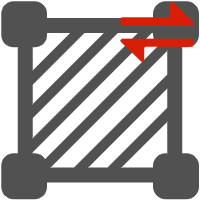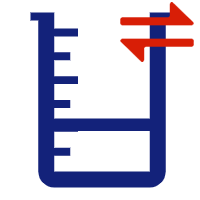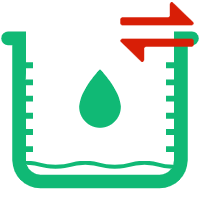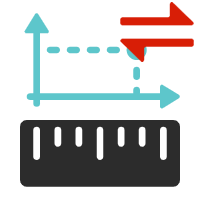
Bar to PSI Converter
Convert bar to psi instantly with our precise pressure unit converter. Essential tool for engineers, technicians, and automotive professionals.
Bar to PSI Converter
Enter bar value and click Convert to get pounds per square inch (PSI).
Enter the value to convert
Relationship Between Bar and PSI
The conversion between bar and pounds per square inch (PSI) is a common pressure unit conversion between metric and imperial systems.
1 bar = 14.5038 PSI
Therefore,
1 PSI = 0.0689476 bar
To convert bar to PSI, we multiply the bar value by 14.5038.
For example, 2 bar equals 29.0076 PSI, which is a typical tire pressure.
Quick Reference:
Standard atmospheric pressure is approximately 1.01325 bar or 14.696 PSI at sea level. The bar unit is commonly used in Europe and many other countries for tire pressure, hydraulic systems, and industrial applications, while PSI is predominantly used in the United States.
Bar
What is a Bar?
The bar is a metric unit of pressure defined as exactly 100,000 pascals (100 kPa) or approximately equal to the atmospheric pressure on Earth at sea level. The bar is not part of the International System of Units (SI), but it is widely accepted and commonly used in Europe and around the world due to its convenient magnitude.
History and Definition
The bar was introduced in 1909 by British meteorologist William Napier Shaw. The name 'bar' comes from the Greek word 'baros,' meaning weight. Originally intended for meteorological use, it quickly gained widespread adoption in various industries. 1 bar = 100,000 Pa = 100 kPa = 0.1 MPa. The millibar (mbar, 1/1000 bar) is commonly used in meteorology and aviation.
Common Uses
- Automotive tire pressure: Most European specifications are in bar (typically 2.0-2.5 bar)
- Weather forecasting: Atmospheric pressure in millibars (standard pressure ~1013 mbar)
- Scuba diving: Cylinder pressures and depth measurements (10 meters depth ≈ 2 bar)
- Hydraulic systems: Industrial and construction equipment pressure ratings
- Compressed air systems: Workshop compressors typically operate at 6-10 bar
- Steam boilers: Low to medium pressure applications (0.5-10 bar)
- Espresso machines: Optimal brewing pressure is 9 bar
- Pressure cookers: Typically operate at 0.7-1.0 bar above atmospheric
- Industrial process control: Manufacturing and chemical processing
- HVAC systems: Refrigerant and system pressures
Advantages of Bar
The bar provides convenient values close to atmospheric pressure, making it intuitive for many applications. It's widely used in Europe, Asia, and most countries outside the United States. The bar is particularly useful for tire pressure specifications, where typical values range from 2-3 bar, which are easy to remember and work with.
Pounds per Square Inch (PSI)
What is PSI?
PSI (pounds per square inch) is a unit of pressure in the imperial system, widely used in the United States and some other countries. It represents the force in pounds applied to an area of one square inch. PSI is the standard pressure unit for many industrial, automotive, and consumer applications in countries using imperial measurements.
Historical Background
PSI developed alongside the imperial measurement system and became the standard pressure unit in English-speaking countries, particularly the United States. While many countries have transitioned to metric units, PSI remains prevalent in American engineering, manufacturing, and everyday applications. The unit is deeply embedded in standards, equipment, and practices across numerous industries.
Common Applications
- Tire Pressure: Car tires typically require 30-35 PSI (2.1-2.4 bar), truck tires 50-80 PSI
- Hydraulic Systems: Construction equipment operates at 2,000-5,000 PSI (138-345 bar)
- Air Compressors: Workshop compressors typically run at 90-150 PSI (6.2-10.3 bar)
- Water Pressure: Residential water pressure is usually 40-80 PSI (2.8-5.5 bar)
- Pressure Washers: Consumer models: 1,500-3,000 PSI (103-207 bar)
- Scuba Tanks: Filled to 3,000-4,500 PSI (207-310 bar)
- Natural Gas Lines: Residential: 0.25 PSI; Commercial: 5-60 PSI
- Steam Boilers: Low pressure: 15 PSI (1 bar); High pressure: 150+ PSI
- HVAC Systems: Refrigerant pressures typically 50-400 PSI
- Fire Sprinkler Systems: Typically 7-30 PSI (0.5-2.1 bar)
PSI in Industry
PSI is the dominant pressure unit in American manufacturing, construction, and automotive industries. Most pressure gauges, specifications, and equipment in the United States are calibrated in PSI. Understanding bar to PSI conversion is essential for international trade, importing equipment, and working with global standards.
PSIA vs PSIG
There are two common PSI measurements: PSIA (pounds per square inch absolute) measures pressure relative to a perfect vacuum, while PSIG (pounds per square inch gauge) measures pressure relative to atmospheric pressure. For example, a tire gauge reading 32 PSIG means the pressure is 32 PSI above atmospheric pressure, or about 46.7 PSIA (32 + 14.7).
Bar to PSI Conversion Table
Common bar to PSI conversions for reference:
- Bar [bar]
- Pounds per Square Inch [PSI]
- 0.5 bar
- 7.2519 PSI
- 1.0 bar
- 14.5038 PSI
- 1.5 bar
- 21.7557 PSI
- 2.0 bar
- 29.0076 PSI
- 2.5 bar
- 36.2595 PSI
- 3.0 bar
- 43.5114 PSI
- 4.0 bar
- 58.0152 PSI
- 5.0 bar
- 72.519 PSI
- 6.0 bar
- 87.0228 PSI
- 7.0 bar
- 101.5266 PSI
- 8.0 bar
- 116.0304 PSI
- 9.0 bar
- 130.5342 PSI
- 10.0 bar
- 145.038 PSI
- 15.0 bar
- 217.557 PSI
- 20.0 bar
- 290.076 PSI
- 25.0 bar
- 362.595 PSI
- 30.0 bar
- 435.114 PSI
- 40.0 bar
- 580.152 PSI
- 50.0 bar
- 725.19 PSI
- 100.0 bar
- 1450.38 PSI

Conversion Calculators

